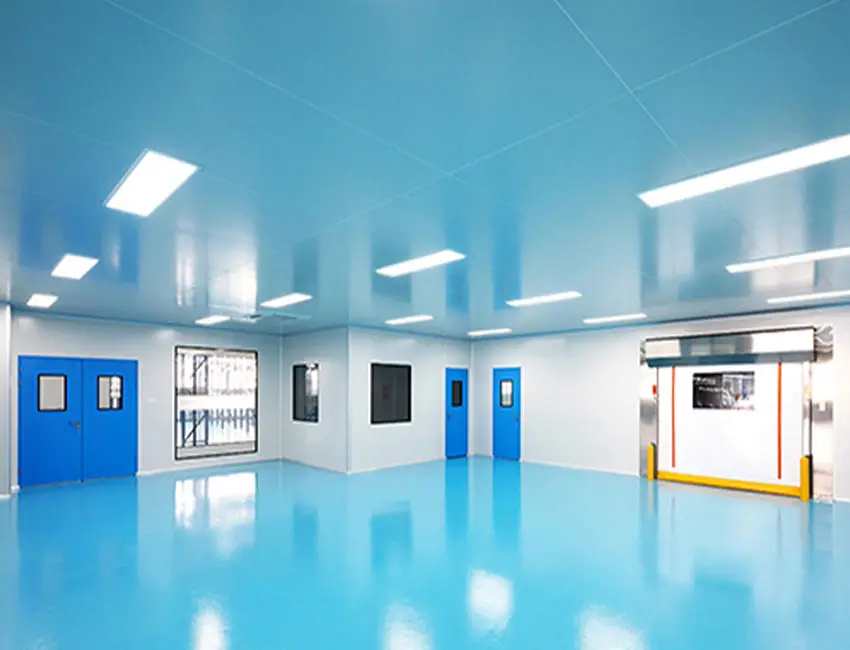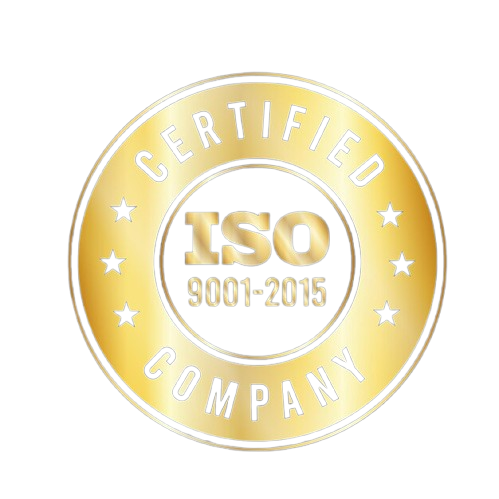Understanding Cleanroom Classifications and Why They Matter
Cleanroom classifications are essential in contamination-sensitive industries, such as pharmaceuticals, biotechnology, electronics, and aerospace, where maintaining strict environmental control is necessary to protect product integrity and ensure compliance. These classifications are based on the level of airborne particles allowed within a cleanroom, which directly affects the quality and reliability of processes conducted in such environments. In regulated industries, even minor contamination can impact safety, product efficacy, and customer trust, making it critical to understand cleanroom classifications and their role in contamination control.
At Wise Link, we specialize in creating cleanroom solutions tailored to meet specific classification requirements, ensuring that our clients maintain optimal air quality, regulatory compliance, and operational efficiency. This guide delves into cleanroom classifications, why they are crucial for contamination control, and how they influence the design and operation of cleanroom environments.
1. What are Cleanroom Classifications?
Cleanroom classifications categorize cleanrooms based on airborne particulate concentrations, which are measured by the number and size of particles permitted per cubic meter of air. The most widely recognized standard for cleanroom classifications is ISO 14644, which replaced the earlier Federal Standard 209E. ISO 14644 defines cleanroom classes from ISO Class 1 to ISO Class 9, with Class 1 representing the cleanest environment and Class 9 the least stringent.
Key Classification Standards:
- ISO 14644-1: This standard specifies cleanliness levels for airborne particulate concentration, with each class detailing the maximum allowable number of particles per cubic meter.
- Federal Standard 209E: Though mostly replaced by ISO standards, some industries still reference this older classification, which uses terms such as Class 100 (similar to ISO Class 5) and Class 10,000 (similar to ISO Class 7).
Wise Link’s Compliance Solutions: Our cleanrooms are designed to meet ISO 14644 classifications, ensuring that our clients’ facilities adhere to the required standards of cleanliness and contamination control.
2. ISO Cleanroom Classes and Their Requirements
ISO cleanroom classifications determine the maximum allowable particulate concentration per cubic meter for particles of a specific size. Here’s an overview of some of the key ISO classes commonly used across industries:
ISO Class 1 to ISO Class 3
These are the highest standards of cleanliness and are primarily used in industries requiring ultra-clean environments, such as semiconductor manufacturing and nanotechnology. ISO Class 1 allows only 10 particles of 0.1 microns per cubic meter, providing near-contaminant-free air.
- Applications: Semiconductor and nanotechnology production, advanced research facilities.
ISO Class 4 to ISO Class 6
Used in industries such as pharmaceuticals and biotechnology, these classes support environments where high cleanliness levels are essential for contamination control, although not as strict as those required for semiconductor manufacturing.
- Applications: Pharmaceutical compounding, sterile packaging, and critical manufacturing processes.
ISO Class 7 to ISO Class 8
Commonly used in medical device manufacturing and electronics assembly, these cleanroom classes maintain lower standards of cleanliness but are sufficient for environments where minimal airborne contamination is still critical.
- Applications: Medical device manufacturing, food processing, and assembly lines.
Wise Link’s Customized Cleanrooms: We design cleanrooms to meet specific ISO classifications, providing our clients with flexible solutions that adapt to their industry requirements, whether they require ISO Class 3 or ISO Class 8 environments.
3. Why Cleanroom Classifications Matter for Contamination Control
Cleanroom classifications are directly tied to contamination control. By setting limits on airborne particle levels, these classifications ensure that cleanroom environments are tailored to protect products, personnel, and processes from harmful contaminants. Industries rely on cleanroom classifications to safeguard their products and to meet regulatory requirements set by bodies like the FDA and EMA.
The Importance of Cleanroom Classifications:
- Product Integrity: In pharmaceutical and biotechnology settings, even minor contamination can compromise product quality, safety, and efficacy. Cleanroom classifications help ensure that particulate levels are controlled, protecting product integrity.
- Regulatory Compliance: Many industries must adhere to strict regulatory standards. Cleanroom classifications support compliance by providing a measurable standard for cleanliness.
- Operational Efficiency: By minimizing airborne particles, cleanroom classifications improve process reliability and reduce the risk of contamination-related downtime.
Wise Link’s Compliance-Driven Designs: We prioritize cleanroom designs that align with regulatory standards, ensuring that our clients achieve the contamination control levels required for both product quality and compliance.
4. Factors Influencing Cleanroom Classification
Several factors influence the classification a cleanroom requires, from the specific processes conducted to the cleanliness standards necessary for product safety. Understanding these factors can help operators select the appropriate cleanroom class and design for their needs.
Industry Requirements
Different industries have varying contamination control needs. Pharmaceutical and biotechnology sectors, for example, require high cleanliness standards to protect against contamination that could impact human health, while electronics manufacturing demands strict contamination control to prevent component damage.
- Pharmaceuticals: Often require ISO Class 5 or 6 for aseptic processing and sterile manufacturing.
- Electronics: Typically require ISO Class 5 or lower for semiconductor and microelectronics production.
Process Sensitivity
The sensitivity of the processes conducted within the cleanroom also impacts the required classification. More sensitive processes, such as sterile drug compounding, need higher levels of contamination control, while less critical processes, like general assembly, may require lower classifications.
Regulatory Compliance
In sectors governed by regulations from the FDA, EMA, or similar bodies, cleanroom classifications ensure compliance with standards for product safety, efficacy, and consistency. GMP (Good Manufacturing Practices) guidelines, for instance, often specify cleanroom classifications as part of their contamination control requirements.
Wise Link’s Tailored Solutions: Our cleanrooms are designed with these considerations in mind, providing industry-specific features and contamination control systems that support both process requirements and regulatory compliance.
5. How Cleanroom Design Supports Classification and Contamination Control
Achieving the desired cleanroom classification requires careful design, including the selection of appropriate materials, airflow management, and advanced filtration systems. Here’s how these elements support contamination control:
Airflow and HVAC Design
The HVAC system in a cleanroom controls airflow patterns, pressure differentials, and air change rates, all of which are essential for maintaining the desired cleanliness level.
- Laminar and Turbulent Airflow: Cleanrooms typically use laminar or unidirectional airflow to ensure that particles are consistently removed from critical areas.
- Positive and Negative Pressure Zones: Maintaining positive pressure prevents contaminants from entering the cleanroom, while negative pressure areas may be used for specific processes requiring containment.
- Air Change Rates: ISO classifications require specific air change rates to maintain cleanliness. High ISO classes (ISO Class 5 and lower) require more frequent air changes than lower classes.
Filtration Systems
Filtration systems, such as HEPA (High-Efficiency Particulate Air) and ULPA (Ultra-Low Particulate Air) filters, play a critical role in achieving and maintaining the desired cleanroom classification.
- HEPA Filters: Remove 99.97% of particles 0.3 microns in size, supporting high levels of contamination control.
- ULPA Filters: Capture 99.9995% of particles down to 0.12 microns, providing even greater protection for environments with strict contamination control needs.
Wise Link’s Filtration Expertise: Our cleanroom solutions include advanced filtration systems, airflow management, and pressure controls that support high-level contamination control, enabling our clients to meet their required cleanroom classification.
6. Monitoring and Maintaining Cleanroom Classification
Achieving a cleanroom classification is only the first step—continuous monitoring is essential for ensuring that the cleanroom maintains its classification over time. Automated monitoring tools provide real-time data on particle levels, airflow, and pressure, allowing operators to make adjustments as needed.
Real-Time Monitoring and Data Analytics
Smart technologies, such as IoT sensors, enable real-time monitoring of cleanroom conditions, providing feedback on critical parameters like particle concentration, temperature, and humidity.
- Continuous Particle Monitoring: Sensors continuously monitor particle levels, ensuring that air quality remains within the specified classification.
- Data-Driven Adjustments: Data analytics can reveal trends in air quality, allowing operators to optimize HVAC settings and identify potential issues before they impact cleanliness.
Routine Testing and Validation
Regular testing and validation are crucial for ensuring ongoing compliance with ISO and regulatory standards. Cleanroom validation typically involves testing airflow, pressure differentials, and particle counts to confirm that the cleanroom continues to meet its classification requirements.
Wise Link’s Monitoring Solutions: We offer real-time monitoring and testing tools that help clients maintain their cleanroom classification over time, providing peace of mind and supporting long-term contamination control.
Conclusion: The Importance of Cleanroom Classifications for Effective Contamination Control
Understanding cleanroom classifications is essential for industries that depend on controlled environments to maintain product quality, regulatory compliance, and operational efficiency. By setting clear standards for contamination control, these classifications provide a foundation for designing cleanrooms that meet both industry-specific and regulatory requirements. With advances in technology, cleanroom operators can now achieve and maintain these classifications more efficiently than ever.
At Wise Link, we are committed to delivering cleanroom solutions that prioritise air quality, compliance, and sustainability. Our designs are tailored to meet the specific classification needs of each industry, ensuring that clients receive the highest levels of contamination control. Contact Wise Link today to discuss how our cleanroom solutions can support your classification and contamination control needs.
Ensure Optimal Contamination Control with Wise Link’s Expert Cleanroom Solutions
Ready to meet stringent cleanliness standards and maintain consistent cleanroom classifications? Wise Link’s industry-specific cleanroom designs provide the contamination control, regulatory compliance, and efficiency your operations demand. Contact us today to discuss how our tailored solutions can support your classification requirements and help you achieve peak cleanroom performance.




